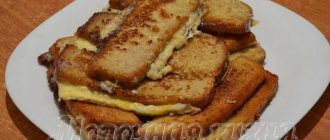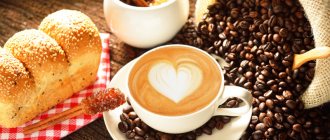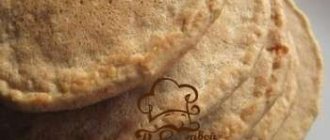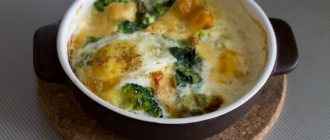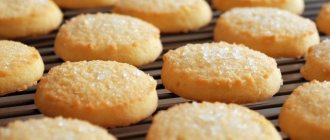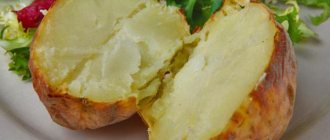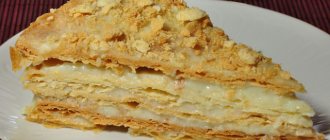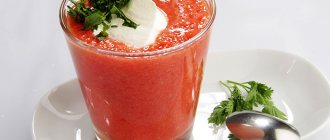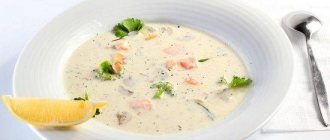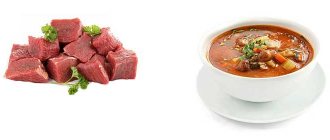Glazed cheese curds for weight loss
What are glazed cheesecakes with cottage cheese made from, and how many harmful chemical additives do they contain? Is this product healthy and how many calories does it contain?
Composition of glazed cheese curds
So, here's what they contain: cottage cheese, sugar, vegetable fat, modified starch, sodium alginate, guar gum, flavoring identical to natural vanillin, potassium sorbate, palm oil, cocoa powder, lecithin.
Nutritional value and calorie content per 100 g: proteins - 8 g, fats - 27 g (in curd base 23 g), carbohydrates - 32.2 g (including sugar - 24 g); energy value – 396.8 kcal. Serving size – 50 g, caloric content per serving – 198 kcal.
The benefits of glazed cheese curds
It would be wrong to talk about their benefits, since the only “non-harmful” ingredient in their composition is cottage cheese. But this is far from ordinary pure cottage cheese, but a mixture of it with cheap vegetable fats and sugar.
Everything else in the composition is a huge amount of harmful sugar and cheap fats, as well as starch, dyes and flavors and emulsifiers (substances that help mix water and fat). Even cocoa powder contains very little.
Harm of curd cheeses
An examination carried out by the “Test Purchase” program revealed that preservatives not indicated on the packaging were found in the cheese brand “Rostagroexport”, and in the cheese brand “Danon” the amount of yeast was 7 times higher than the norm.
In addition, glazed cheese curds “Dmitrovsky Dairy Plant” and “Karat” contained coliform bacteria. Not to mention the fact that mold was found in the Dmitrovsky Dairy Plant brand cheese.
Glazed cheese curds recipe
If you want to prepare a healthy alternative to glazed cheese yourself, then you will need the following products: cottage cheese - 400 g, butter - 150 g, dark chocolate - 150 g, powdered sugar - 70 g, vanilla sugar - to taste.
Mash the cottage cheese and add grated chilled butter, as well as a little powdered sugar and vanilla sugar. Form curd sausages, pour over preheated chocolate and place in the freezer for 15 minutes.
Is it possible to eat glazed cheese curds?
Glazed curd cheese is nothing more than a fairly high-calorie dessert, containing almost 200 kcal. It contains a minimum of healthy protein - only 4 grams per serving, and everything else is cheap vegetable fats and sugar.
If you care about your figure or health, it is much easier to completely exclude this product from your diet, because there are many alternative, and much healthier, products containing cottage cheese.
Glazed curd cheese actually contains a minimal amount of useful substances, and its basis is vegetable fat and sugar. In addition, experts often find dangerous ingredients in cheese curds that are not listed on the packaging.
Is it possible to eat glazed cheese curds on a diet and proper nutrition? When on a diet, it is not very advisable to add them to your diet, but just a little is possible. But if you are on a healthy diet, then why not treat yourself to something sweet? Let's see how to choose the right glazed cheese curds.
Application
Most often, curd cheese is used for a snack. It perfectly satisfies hunger, as it is a fairly high-calorie product. Children love this delicacy very much and prefer to eat it for breakfast. But glazed cheese curds are also used in cooking. They are added to cookie dough. They use cheese as a filling for pancakes and make cheesecakes from them. All of these dishes are also great for a good breakfast.
Market Analytics
- Beauty of the future: cosmetic innovations 2021
- New ingredients are the driving force of the cosmetics industry
- Global Cosmetic Packaging Market – Focusing on Digital and Sustainability
Convenient search for beauty salons on our website
Beauty salons in Moscow Beauty salons in St. Petersburg Beauty salons in Ekaterinburg Beauty salons in Novosibirsk
Latest blog posts on our website
- Naturecream / Trylagen - supports the entire collagen life cycle.
- Naturecream / Spring skin rehabilitation
- Naturecream / Cleavage - a woman's passport
- Naturecream / Anti-cellulite “Memo”
- Naturecream / Peptides instead of beauty injections.
- Naturecream / Microplastics in cosmetics
- Naturecream / Sea buckthorn oil - “liquid gold” for the face
- Naturecream / Superfood for skin from Navarra
- Naturecream / Autophagy - prolonging skin youth
- Naturecream / Cosmetics Anti - pollution skin health in the metropolis
Latest forum topics on our website
- Mrs._Smith / Badly sunburned! What to do?((
- Ice / Is it necessary to combine fitness classes with a diet?
- Antonova / What can be used for hair loss?
- Radio operatorKat / Who was on a protein diet?
- Suzanna / Mesotherapy on the face
Other articles in this section
| Dorogobuzhsky cheese This dairy product is known for its buttery consistency and aromatic cheesy smell. It belongs to soft cheeses. It has a spicy, specific taste due to its preparation from whole cow's milk with the addition of cheese mucus microflora, which appears on the surface of the cheese. Rennet gives softness to Dorogobuzh cheese. This dairy product has a slightly ammonia smell and a pronounced cheesy and buttery taste. Dorogobuzhsky cheese contains a huge amount of soluble proteins - this is one of its nutritional advantages. |
| Fontina cheese This type of cheese has been produced in the mountainous regions of the Alps since the Middle Ages, and Italy is considered its homeland (namely, the province of Val D'Agosta). Delicate Fontina cheese with an exquisite taste and unusual aftertaste is today known and loved all over the world. |
| Blue mold cheese A characteristic feature of blue mold cheese is the presence of specks of blue mold located inside the cheese mass in the form of picturesque veins. This is a product for true gourmets and connoisseurs of delicacies. The most popular varieties are: Roquefort, Fourme d'Ambert, Bleu d'Auvergne, Bleu de Causse and others. France is considered the birthplace of these cheeses, although they are also made in Italy and Denmark. |
| Ginger milk Ginger milk is a special drink. It has a specific pungent taste and aroma due to ginger root. Thanks to its refined and pleasant taste, this product is gaining more and more trust among consumers. |
| Fermented milk cheese Fermented milk, or rennet, cheese is a product obtained from milk by adding rennet or starter cultures. This type of cheese is more than 5000 years old; it was obtained quite by accident by the traveler Kanan. He took milk on the road and stored it in a clay pot; the milk fermented and lumps formed. After decanting the whey, Kanan discovered a very tasty and satisfying fermented milk product. Today, in times of high technology, fermented milk cheese is produced at a higher level in factories. The fermented milk group includes cottage cheese, feta cheese, processed cheese flavored with shrimp, bacon, mushrooms, etc. Residents of Italy are big fans of cheeses. Italian cheeses Ricotta, Mozzarella, Mascarpone are known throughout the world for their delicate taste. |
| Milk 1% Many peoples in the world create legends about such a drink as milk. In ancient Rome, residents believed that Jupiter himself was fed with milk. For its nutrition they used goat milk - Amalthea. That is why people brought milk to him as a sacrifice. Residents of Olympus also often drink milk. |
| Milk 3.6% Milk 3.6% is a unique and balanced product containing a huge range of useful substances. In addition to its exceptional health benefits, milk also has excellent taste. |
| Rougette cheese Rougette cheese is a cheese with an attractive and refined taste. Bavaria is considered the birthplace of this cheese. The basis of the product is cow's milk and cream. Its distinctive feature is the paprika-based crust, which turns red. And the characteristic ammonia taste, washing the cheese rind five times and an equally noticeable piquant smell distinguishes it from other soft varieties. |
| Cottage cheese 0% (low-fat) Cottage cheese is a fermented milk product that is obtained by coagulating milk protein and separating whey from it. Low-fat cottage cheese is made from low-fat milk and does not differ in taste from regular full-fat cottage cheese. It is also called dietary. It combines the maximum benefits of milk and an ideally selected composition of nutrients. |
| Gouda cheese Gouda cheese is one of the most popular types of cheese. This is a hard cheese made from whole cow's milk. This type of cheese appeared a long time ago, back in the 12th century, its homeland is a small town in South Holland with the same name Gouda. There they first learned to make this type of cheese, and the city of Gouda is still a major cheese-making center in Holland. Gouda cheese has a fairly high fat content - about 48-51%. The raw material for making cheese is high-quality whole milk. |
Selection rules
If you love delicious cheese curds with a glazed chocolate filling, then here are a few rules when buying them:
- Initially, pay attention to the packaging itself: the paint on it should not rub off;
- the packaging should not be torn anywhere, because this violates all the rules for storing cheese curds;
- inscriptions in the style of “luxury”, “premium”, “extra”, “bio” are just a marketing ploy to attract buyers;
- The correct name for the cheese is: Glazed curd cheese;
- incorrect name: glazed cheese curd (which means instead of butter and milk it contains vegetable ingredients);
- if you notice drops of moisture on the cheese, it means it has been frozen and defrosted many times;
- the product must be completely covered with glaze;
- high-quality products resemble the taste of ice cream and melt in your mouth;
- good cheese should contain a minimum of food additives;
- cheese curds with jam and condensed milk contain many artificial additives;
- there should be no vegetable fats in the composition;
- A high-quality cheese curd should contain only milk, butter and sugar;
- the average weight of the cheese is 40-50 grams (10 grams goes for icing);
- good glaze is made only from cocoa butter and grated cocoa powder;
- If the shelf life of the cheese is more than 10 days, then it contains a lot of artificial additives.
Home laboratory
Step 1. Open the package!
The packaging should not be damaged, and the cheese glaze should stick to the packaging material.
Step 2. Evaluate the appearance and shape of the cheese!
The shape of the cheese can be different: cylindrical, oval, rectangular. The structure must not be disturbed. A high-quality cheese curd has a uniformly glazed surface. The curd mass may be visible at the base.
Is the shape deformed or the glaze has fallen off in places? This could happen due to violation of storage conditions and careless handling of the product during trade.
Step 3. Evaluate the color of the cheese!
The color can be white or creamy. If the composition includes flavoring fillers, the color will be determined by the color of the component. The color of the cheese should be evenly distributed throughout the mass.
Selection rules
If you love delicious cheese curds with a glazed chocolate filling, then here are a few rules when buying them:
- Initially, pay attention to the packaging itself: the paint on it should not rub off;
- the packaging should not be torn anywhere, because this violates all the rules for storing cheese curds;
- inscriptions in the style of “luxury”, “premium”, “extra”, “bio” are just a marketing ploy to attract buyers;
- The correct name for the cheese is: Glazed curd cheese;
- incorrect name: glazed cheese curd (which means instead of butter and milk it contains vegetable ingredients);
- if you notice drops of moisture on the cheese, it means it has been frozen and defrosted many times;
- the product must be completely covered with glaze;
- high-quality products resemble the taste of ice cream and melt in your mouth;
- good cheese should contain a minimum of food additives;
- cheese curds with jam and condensed milk contain many artificial additives;
- there should be no vegetable fats in the composition;
- A high-quality cheese curd should contain only milk, butter and sugar;
- the average weight of the cheese is 40-50 grams (10 grams goes for icing);
- good glaze is made only from cocoa butter and grated cocoa powder;
- If the shelf life of the cheese is more than 10 days, then it contains a lot of artificial additives.
Fake starch?
Signs of falsification were found in the “Soviet Traditions” product. They identified starch that was not listed in the composition. The fact that starch was not in the list of ingredients is understandable - its use is not allowed in the production of curd cheeses. Let us remind you that “Soviet Traditions” is one of two cheesecakes with GOST marking. Also in this sample, experts found that its titratable acidity was below the minimum values allowed by the standard. So, “Soviet Traditions,” alas, turned out to be devoid of traditional quality.
Not Recommended Products
Unfortunately, most of the options that are on store shelves are not at all suitable for diet or proper nutrition.
❌Curd cheeses with different additives are not suitable.
❌Also cheesecakes.
❌ Glazed cheesecakes “365 days” are not the best option for proper nutrition.
❌Curds from Prostokvashino are also not suitable.
❌ Unfortunately, the product from Luxus is also not suitable.
❌And this GOST too.
❌And also products from “Svitlogorye”.
Do you eat glazed cheese curds on a diet? Treat yourself to something tasty so that the diet does not go so sad and sad. Let your extra pounds leave you forever.
Thanks for your time
Is it possible to eat food that is 1-2 days expired?
A proper dinner is an important component of dietary nutrition: in the evening, you are allowed to eat only certain types of foods that are low in calories and healthy. The ideal dinner for weight loss is no less important than breakfast and lunch: if you eat high-calorie foods in the evening, this can soon affect the volume of the abdomen, sides and thighs. That is why many representatives of the fair sex are interested in what to eat for dinner in order to lose weight. First of all, these must be low-calorie, but healthy dishes, however, they must also be consumed according to certain rules: For an easy dinner for weight loss, it is recommended to leave only vegetables raw, baked or boiled. Proteins provide the greatest benefit in the evening, but they should also be consumed in combination with a small amount of carbohydrates. Protein products include kefir, meat, fish, cottage cheese, shrimp, cheeses, squid and boiled eggs.
Daily calorie intake: should you eat glazed cheese?
Effective diets can be based not only on the principle of counting calories; for many, the method of eliminating foods or eating according to a specific plan drawn up by the authors of the diet works. However, diets in which we count and write down remain among the most popular. What is the reason?
The fact is that such diets are very flexible, and also allow you to eat absolutely all foods, which appeals to lovers of sweets and fatty foods who find it difficult to give up their little weaknesses. However, this approach has many disadvantages that force many to lose faith in calorie counting.
Firstly, anyone who decides to go on such a diet is faced with the need to calculate such a value as the daily calorie intake. Many sites offer to calculate it for us. However, there is a fly in the ointment that spoils everything. Even if age, height and weight are taken into account in the calculations, the values obtained when calculated using different formulas are different, and this difference is sometimes more than 200 kcal. And this is the calorie content of a small bun or glazed cheese, which you can eat for breakfast or not. And based on the results of the calculations, we don’t know for sure whether we can afford morning pleasure or not.
Secondly, the daily calorie intake will be calculated correctly only if your weight is normal. If it is significantly higher than the norm, the figure you receive will be “lying” by 20-25 percent. And this is a very significant value: for the average usually calculated value of the norm of 1800, this could be 450 kilocalories. Why is the figure overestimated? The fact is that fat cells, which make up a large part of the mass in the body of a very fat person, do not require a large amount of energy to maintain their vital functions. And the calculations include much larger values, because muscles consume three times more energy for vital activity. The other side of the problem is that the norm will not be enough for girls with an athletic build, because the calculations include costs for an average percentage of muscle mass, and not a high one.
Thirdly, these formulas do not always take into account the fact that different types of food require different amounts of energy to digest. And this value goes into the minus, that is, if protein foods make up a large share in the diet, you will need a lot of energy to absorb it. The Kremlin diet is very effective not only because the diet is low in carbohydrates, but also because a person has to eat proteins, which forces the body to spend a lot. Although in general this diet is very harmful to the kidneys and liver, so it is better to count calories.
Fourthly, a significant problem in calculations is “double-entry bookkeeping”: the fact is that calorie consumption tables often already include basal metabolic rates. That is, if you see that 450 kcal per hour is consumed when going up and down the stairs, you need to take into account that this already includes about 60 kcal per hour for breathing, heart function and other involuntary processes that occur at rest. “Unadvanced” users of tables do not know this and add the energy spent on the load to the basal metabolic rate figure.
Video exercises in water for weight loss
Most people who are losing weight know that all the calories that the body does not use for its own needs will be converted into fat deposits. The key to all weight loss diets is creating a calorie deficit. It will help avoid the formation of new fat deposits, while achieving the burning of old fat. In order to achieve an effective, and most importantly adequate, calorie deficit in the body, you need to know what to eat and what is better to exclude from the diet menu. The first method of losing weight is not suitable for everyone, since physical activity is only suitable for people without serious illnesses with a minimum level of physical fitness. The second method of losing weight is suitable and will be healthy for the vast majority of those losing weight.
Compound
Glazed cheese and curd cheese have been synonymous for a long time. By glazed cheese curd, most consumers still mean sweet curd cheese covered with chocolate glaze. Modern food manufacturers offer us a huge range of cheese curds in various types of glaze, with fruit and nut fillings, with coconut flakes and condensed milk. But what is hidden under the sweet glaze and behind the flavoring additives? Is it possible today to put an equal sign between glazed cheese and a product made from cottage cheese?
In accordance with GOST R 52790-2007 “Glazed curd cheeses. General technical conditions", glazed curd cheese is a molded curd mass obtained from pressed cottage cheese, coated with food glaze, weighing no more than 75g
And here is what is included in the glazed cheese curd : cottage cheese, sugar, vegetable fat, modified starch, sodium alginate, guar gum, flavoring identical to natural vanillin, potassium sorbate, palm oil, cocoa powder, lecithin.
Harm and contraindications
Unfortunately, in addition to the listed beneficial properties of glazed cheese curds, the product has significant disadvantages and a number of contraindications. Modern industrially produced store-bought delicacies do not inspire confidence among consumers responsible for their health. Let's figure out why:
- The dessert is oversaturated with sugar and fat, so this product is prohibited for people with diabetes.
- Natural cottage cheese is not stored for long, so a stale product easily harbors pathogenic bacteria and even E. coli, which can completely ruin the normal functioning of the stomach and intestines (strictly monitor the expiration date of the cheese).
- The curd bar contains quite a lot of preservatives, which prolong its life, but are harmful to the human body; in addition, natural fruits and berries are also often replaced with canned and synthetic products.
- Each glazed cheese curd must contain a stabilizer , which maintains the homogeneous composition of the curd mass, and what exactly this stabilizer is is completely unclear to the average person.
- Often dessert contains flavor enhancers and E-additives , which are especially harmful to a child’s immature body, in particular, they can harm the cells of the child’s nervous system.
- Unscrupulous manufacturers may hide the composition of the product and not print it in its entirety on the packaging; in this case, you will never know what exactly is hidden under the chocolate glaze and how safe it is to eat.
- To save on the final product, natural butter can be replaced with an inexpensive analogue of plant origin, and accordingly the quality of such fats will be significantly lower (by regularly eating such sweets, you can develop problems with the heart and blood vessels, gain noticeable weight and earn high cholesterol).
Benefits and calories
It would be wrong to talk about their benefits , since the only “non-harmful” ingredient in their composition is cottage cheese . But this is far from ordinary pure cottage cheese, but a mixture of it with cheap vegetable fats and sugar. Nutritional value and calorie content per 100 g : proteins - 8 g, fats - 27 g (in curd base 23 g), carbohydrates - 32.2 g (including sugar - 24 g); energy value – 396.8 kcal. Serving size – 50 g, caloric content per serving – 198 kcal.
Everything else in the composition is a huge amount of harmful sugar and cheap fats , as well as starch, dyes and flavors and emulsifiers (substances that help mix water and fat). Even cocoa powder contains very little.
By leaps and bounds
About the main thing - about safety. In five out of seven samples, experts found that the yeast content exceeded the standards. Technical regulations allow no more than 100 CFU/g. CFU are colony forming units, that is, the number of microorganisms per square centimeter. So, in terms of this indicator, some manufacturers have greatly overdone it. For example, in the cheese “Soviet Traditions” there is 14 times more yeast than normal, but in “Rostagroexport” - 140 times, and in “Nostalgia” - generally 150 times! Against this background, there is too much microorganisms in the Billa and B.Yu. Alexandrov" by 5.5 and 2 times, respectively, looks quite innocent. But we are talking about a violation of the safety requirements of technical regulations.
Glazed cheese curds
Everything turned out well with the yeast at Tvorobushki, but they discovered the presence of a small amount of sorbic acid, a preservative whose use in curd cheeses is unacceptable.
Only Svitlogorye cheese meets safety requirements for all tested indicators.
For violation of safety requirements, samples “Soviet Traditions”, “Nostalgia”, “Rostagroexport”, “Billa”, “B. Yu. Alexandrov" are included in the Black List of Roskontrol.
What does it taste like?
In general, experts assessed the taste and smell of the curds as “typical for this type of product.” Rostagroexport and Bill noted a very weak fermented milk taste. And in “Svitlogorye” the glaze is too soft. The fact is that how tasty the cheese is is influenced by the ratio of the mass of the glaze and the curd base. The old GOST normalized this ratio (stating that the glaze should be no more than 20%), the new one has no such requirements. And in all tested cheese curds, more than 20% of the glaze was detected. Although “Tvorobushki” showed a simply sensational result - 41% of the cheese was glaze.
Food pricelessness
All cheesecakes indicate the percentage of fat content. And you and I are trusting customers, we not only believe what is written, but also choose cheesecakes in accordance with our tastes. In reality, it turned out that these figures do not coincide with real data: in the samples “Svitlogorye”, “Nostalgia”, “Rostagroexport”, “Billa” the fat content of the curd base was less than stated on the packaging. And the most “dietary” “Tvorobushki” turned out to be fattier than the manufacturer promises.
Glazed cheese curds
It turned out that you should not rely on the labeling when purchasing.
